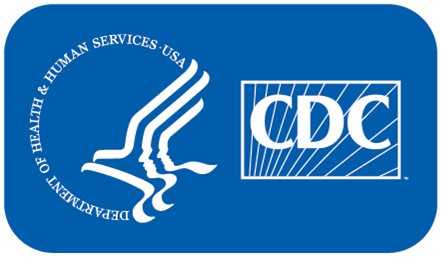Slide narration: Hello, and welcome to the second module of the CDC series Applying CDCs Guideline for Prescribing Opioids. In this module, we'll look at the CDC-recommended options for treating chronic pain without opioids. You will have the opportunity to examine the benefits and expected outcomes of prescribing nonopioid medications and nonpharmacologic treatments to your patients. At the end of this module, you will be presented multiple choice knowledge checks to test your mastery of the content.
Download Adobe Acrobat Reader.
CDC Guideline for Prescribing Opioids for Chronic Pain - United States, 2016
Narration text: You may find it useful to refer to the CDC Guideline during this module. You can access, download, and print a copy of this and other helpful documents by selecting the Resources tab at any time. Some screens include a link icon which, when selected, opens additional online resources. Let's take a closer look at the navigation features of this web-based training. As you've experienced already, the Next and Back buttons enable you to move to a new screen or back to a previous screen. If either the Next or Back button is dimmed, it is disabled, and you will need to complete an action onscreen to continue. Refer to the navigation prompt located at the bottom of the screen to help you determine how to proceed. Selecting the Menu button in the upper right corner opens a list of all the topics available in the module. A selection made from the list advances the training to that topic. Pressing the open Menu tab a second time will collapse it. There is also a set of audio controls located at the bottom of the training window. Here you can pause or play the narration, control the volume, and open the text transcript for the narration if needed. Most slides, however, will not be narrated, and this set of controls will be dimmed and disabled.
Today, we know that the serious and potentially fatal risks of opioids can far outweigh their uncertain benefits in many situations.
To improve patient care and safety, the CDC Guideline recommends nonopioid medications and nonpharmacologic treatments as the preferred therapies for chronic pain outside of active cancer, palliative, or end-of-life care.
CDC Guideline for Prescribing Opioids for Chronic Pain - United States, 2016
To improve patient care and safety, the CDC Guideline recommends nonopioid medications and nonpharmacologic treatments as the preferred therapies for chronic pain outside of active cancer, palliative, or end-of-life care.
Opioids should not be the first-line or routine therapy for chronic pain as they present serious risks, including overdose and opioid use disorder.
If prescribing opioids, combine this treatment with nonopioid medication and nonpharmacologic treatment, as appropriate. Consider opioid therapy if the expected benefits for both pain and function are anticipated to outweigh the risk to the patient.
Primary care providers may find managing chronic pain to be stressful. Some have reported concerns about insufficient training in prescribing opioids and other treatments for chronic pain. CDC recognizes that pain management can be challenging for healthcare providers as well as patients. To provide the best individualized and multidimensional treatment, providers and patients are encouraged to consider all options for treating chronic pain.
Providers and patients should consider the benefits and risks of all treatment options.




To engage patients in their pain management, here are some strategies:
Asking open-ended questions throughout your patient interview promotes robust responses. For example, you might say, "Tell me about how pain is currently affecting your life," or "What are some of your goals as we manage your pain?" This approach encourages patient dialogue and collaboration throughout treatment. Asking questions that require more than a "yes" or a "no" response also provides patients the opportunity to reflect more deeply on the question.
Talk with your patients and find out where they want to be with respect to pain control or what they want to accomplish. Help them focus on goals related to daily activities and overall function, not just complete elimination of pain. For example, you might say, "You mentioned that you wanted to be able to play with your child. Let's do what we can to get there."
Listen intently to your patient's concerns, trying to empathize with his or her perspective. Maintain eye contact and use appropriate nonverbal ways of communicating. Relay the information heard back to the patient in his or her own words to confirm understanding. Correct misunderstandings if they exist and ask if there are any questions or concerns before moving forward. For example, the patient may tell you that he's concerned with missing out on his daughter's games, recitals, and other events at school. You can respond with, "You're worried that you're missing out on her childhood."
After your evaluation and diagnosis of the patient, discuss potential options. First, consider nonopioid medications and nonpharmacologic treatment options with the patient. Determine whether the expected benefits of treatment outweigh the associated risks given the patient's comprehensive history. Appropriate use, dose, and duration of treatment should also be considered.
To engage patients in their pain management, here are some strategies:
Take time to listen to your patient's concerns. Show that you are genuinely interested in helping and collaborating with the patient to find a solution. For example, you might tell your patient, "I understand that you've been experiencing chronic pain, and it's challenging living with it day to day."
Reflect patient response in a neutral way or reframe the conversation. Argument and direct confrontation can reinforce a defensive, oppositional stance. Recognize patient resistance as a signal to listen more carefully. For example, when a patient tells you that the only thing that will work for her pain are opioids, you might respond with, "You think other treatments are ineffective." By saying this, you are meeting the patient with an amplified reflection and allowing the patient to react and engage in a discussion.
Listen carefully for indications the patient is considering change. Reinforce and encourage these thoughts with credible, clear, and actionable information. For example, your patient might say, "I'd probably feel better if I exercised regularly." Change talk can be driven by your patient's desires or personal reasons for making a change. For example, the patient may tell you that he's concerned with missing out on his daughter's games, recitals, and other events at school. You can respond with, "You're worried that you're missing out on her childhood."
Use this patient-centered approach to discuss safer and more effective treatments with your patient. Always consider your patient's clinical situation, functioning, and life context.
The CDC Guideline presents contextual evidence that both nonopioid medications and nonpharmacologic treatments are effective for chronic pain.
Nonopioid medications are not generally associated with development of substance use disorder. The number of fatal overdoses associated with nonopioid medications is a fraction of those associated with opioid medications.
Nonopioid medications are also associated with certain risks, particularly in older patients, pregnant patients, and patients with certain comorbidities such as cardiovascular, renal, gastrointestinal, and liver disease.
Nonpharmacologic treatments can reduce pain and improve function in patients with chronic pain. These treatments can also encourage active patient participation in the care plan, address the effects of pain in the patient's life, and can result in sustained improvements in pain and function with minimal risks.
If opioids are used, they should be combined with nonopioid medications and nonpharmacologic treatments, as appropriate. Refer to the module on Deciding Whether to Prescribe for information on how nonpharmacologic treatments can enhance the effectiveness of opioids. Providers should review FDA-approved labeling, including boxed warnings, before initiating treatment with any pharmacologic therapy.
Acetaminophen
Selective Cyclooxygenase-2 (COX-2) Selective Inhibitors and NSAIDs
Treatment Description
Exercise therapy (e.g., walking, swimming, yoga, free weights, etc.) encourages active patient participation in the care plan and provides the opportunity to address the effects of pain in the patient's life. Exercise therapy can address posture, weakness, or repetitive motions that contribute to musculoskeletal pain; reduce lower back pain; improve fibromyalgia symptoms; and reduce hip and knee osteoarthritis pain. Exercise therapy can also be used as a preventative treatment for migraine.
Key Findings
Associated Risks
Treatment Description
CBT addresses psychosocial contributors to pain, including fear, avoidance, distress, and anxiety, and helps improve patient function. CBT trains patients in behavioral techniques to help modify situational factors and cognitive processes exacerbating pain. CBT engages patients to be active, teaches relaxation techniques, supports patient coping strategies, and often includes support groups, professional counseling, or other self-help programs.
Key Findings
Associated Risks
Multimodal and multidisciplinary therapies combine exercise and related therapies with psychologically-based approaches. These strategies can reduce long-term pain and disability compared with single-modality care and compared with physical treatments (e.g., exercise) alone.
These therapies involve coordination of medical, psychological, and social aspects of care and should also be considered for patients not responding to single-modality therapy or those having several functional deficits.
If opioids are used, nonopioid medication and nonpharmacologic treatment should also be prescribed as appropriate. Treatment combinations should be tailored depending on patient needs, cost, and convenience. Multimodal and multidisciplinary therapies, however, are not always available or reimbursed by insurance and can be time-consuming and costly for patients.
Which of the following are considered preferred treatments for a patient suffering from osteoarthritis? Select all that apply.
You identified all the correct first-line treatment options.
Not quite. You did not choose all the correct treatment options. Appropriate treatments for a patient suffering from osteoarthritis are NSAIDs, weight loss in overweight/obese patients, and exercise.
Opioids should not be considered a first-line treatment option for osteoarthritis and should be reserved only for short-term use in patients with severe pain if other treatment options have failed.
Which of the following would be a good first line of treatment for a patient suffering from chronic low back pain? Select all that apply.
You identified all the correct first-line treatments for chronic low back pain. Yoga, CBT, NSAIDs, and duloxetine, a serotonin-norepinephrine reuptake inhibitor, are appropriate nonopioid and nonpharmacologic treatments for chronic low back pain.
Not quite. Yoga and CBT are appropriate nonpharmacologic treatments. NSAIDs and duloxetine, a serotonin-norepinephrine reuptake inhibitor, are appropriate first and second-line nonopioid medications
This would not be the best choice. Opioids should not be considered as first-line therapy for chronic low back pain.
Which of the following is not a potential harm/risk of pregabalin? Select the best answer.
Correct. Gastrointestinal bleeding may be caused by COX-2 inhibitors and NSAIDs.
Not quite. Yoga and CBT are appropriate nonpharmacologic treatments. NSAIDs and duloxetine, a serotonin-norepinephrine reuptake inhibitor, are appropriate first and second-line nonopioid medications
Sedation, dizziness, and ataxia are more commonly linked to pregabalin. Gastrointestinal bleeding may be caused by COX-2 inhibitors and NSAIDs.
Narration Text: Nonopioid medications and nonpharmacologic treatments are preferred for chronic pain. Providers should consider opioid therapy only if expected benefits for both pain and function are anticipated to outweigh risks to the patient.
Nonopioid medications and nonpharmacologic treatments are preferred for chronic pain
Consider opioid therapy only if expected benefits outweigh the risks
Use opioids in combination with nonopioid medication and nonpharmacologic treatment, as appropriate
USE OPIOIDS IN COMBINATION WITH NONOPIOID MEDICATION AND NONPHARMACOLOGIC TREATMENT, AS APPROPRIATE
You may now continue to the Training and Continuing Education Online System (TCEOnline) to receive continuing education credit for this training module. Â Please register on TCEOnline, search for the course (WB2859), select the appropriate credit type, and complete the course evaluation and posttest in the Participant Services section. Directions for completing this process are available in the Resources tab.
Select the Resources tab for links to clinical tools designed to help you apply these recommendations in your practice.
